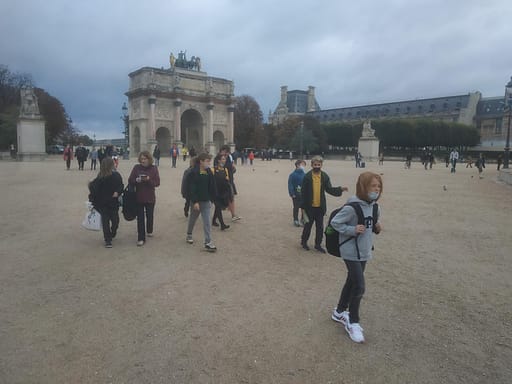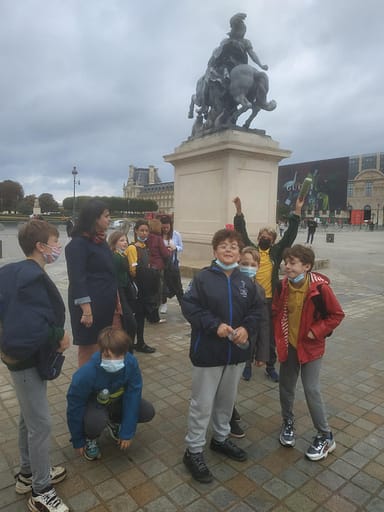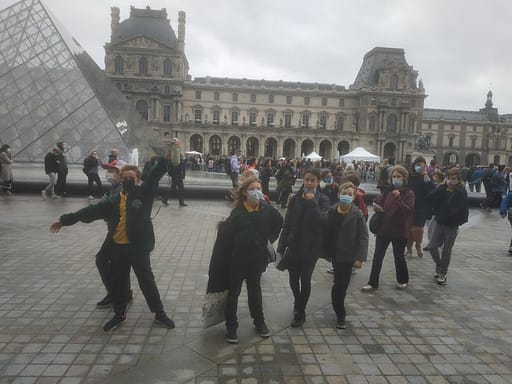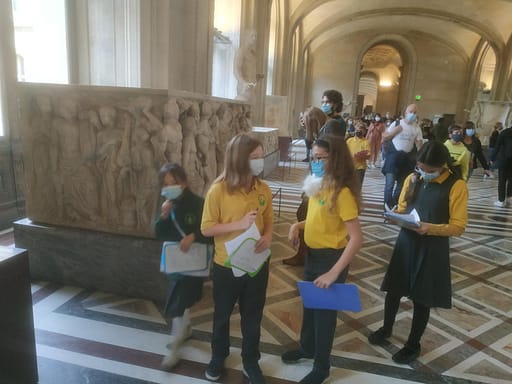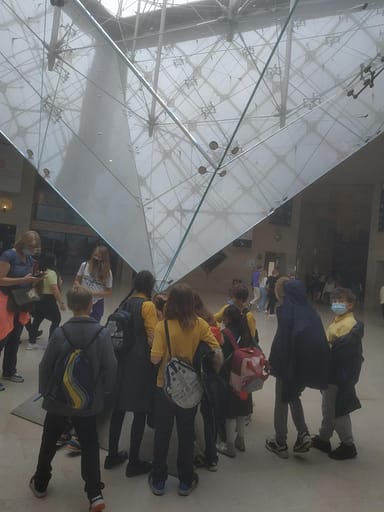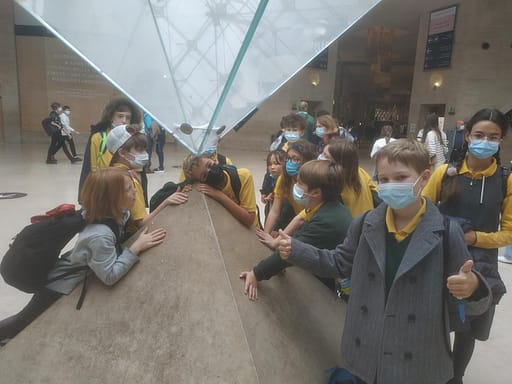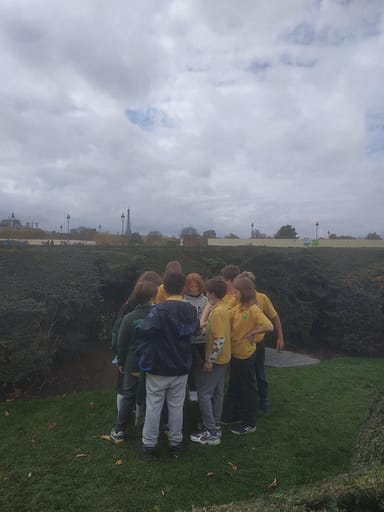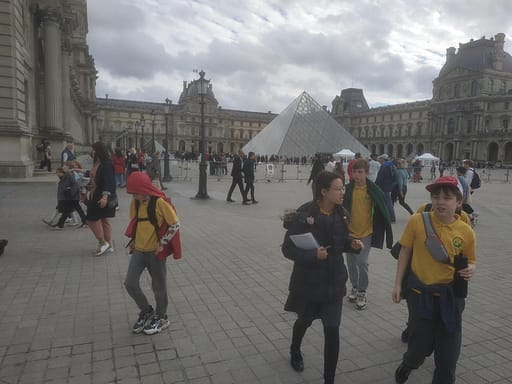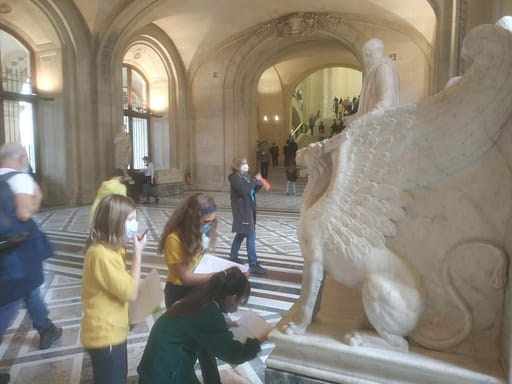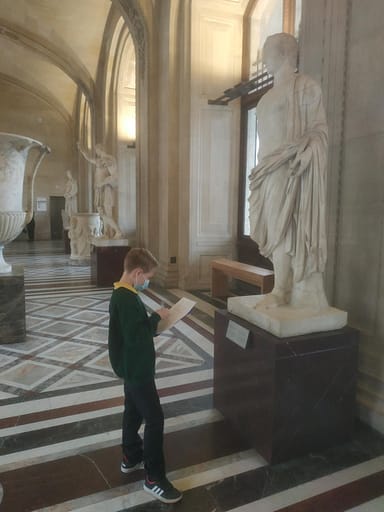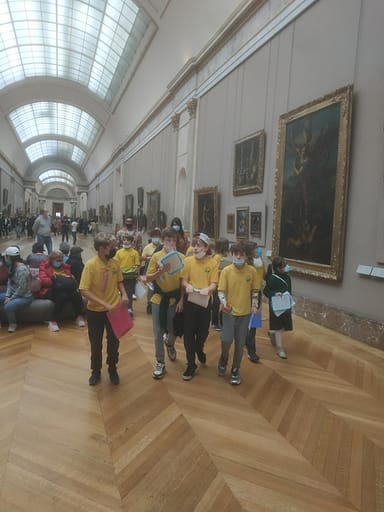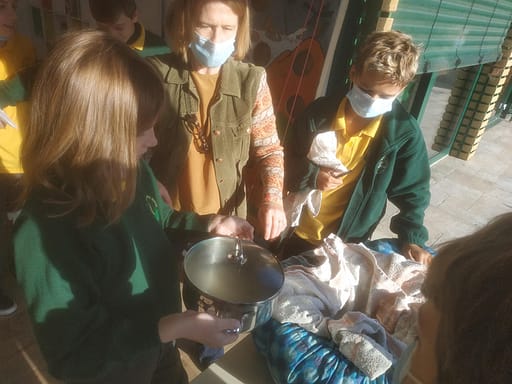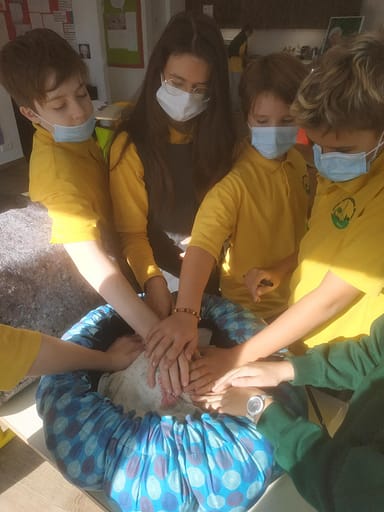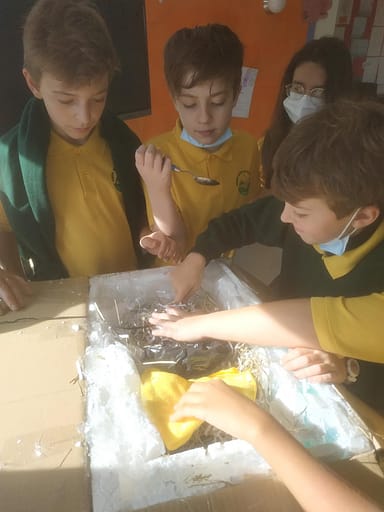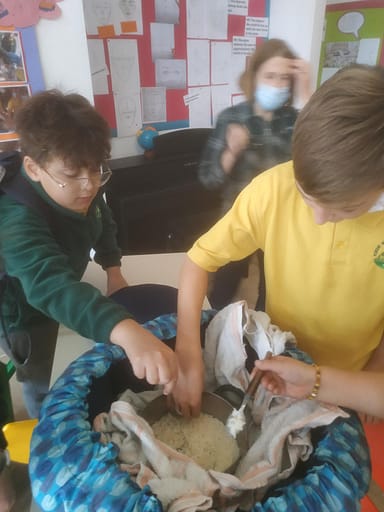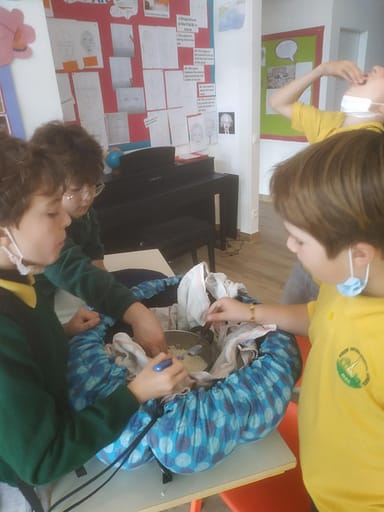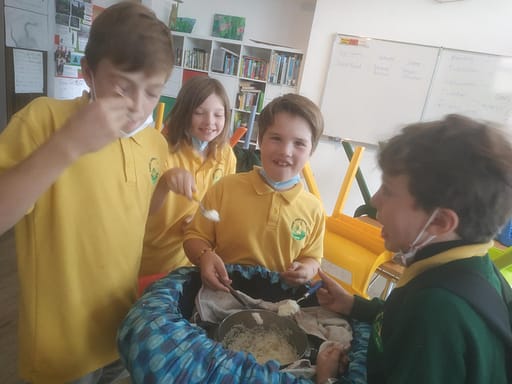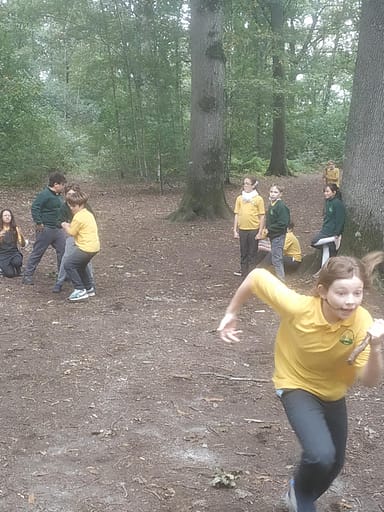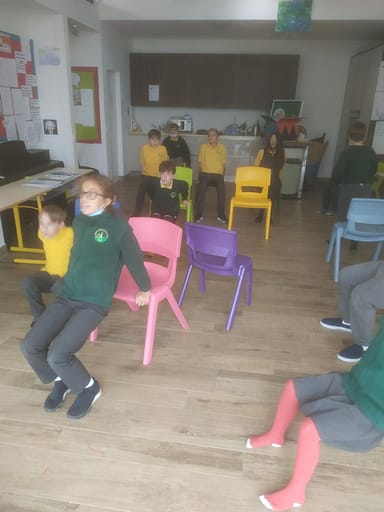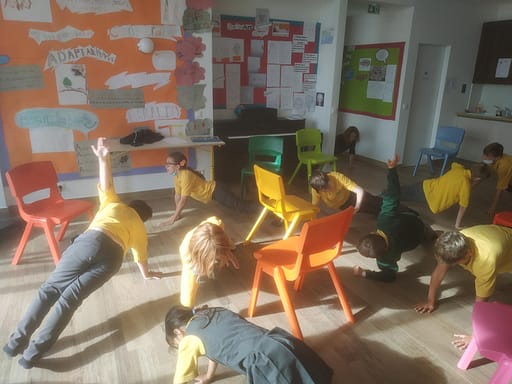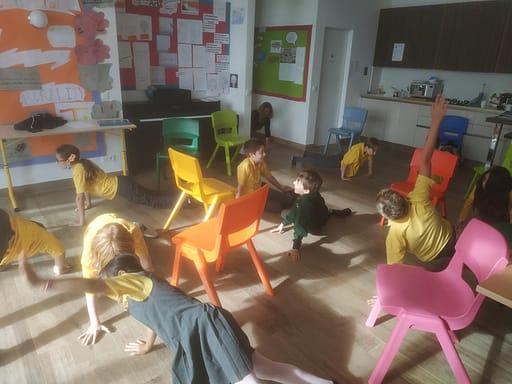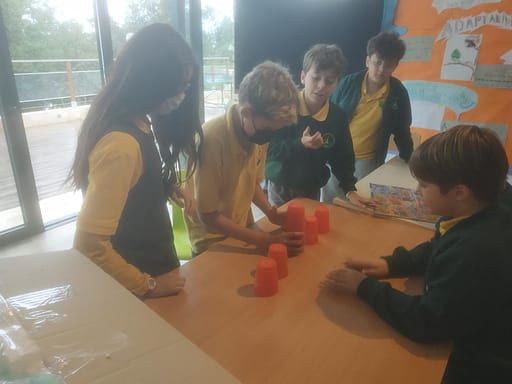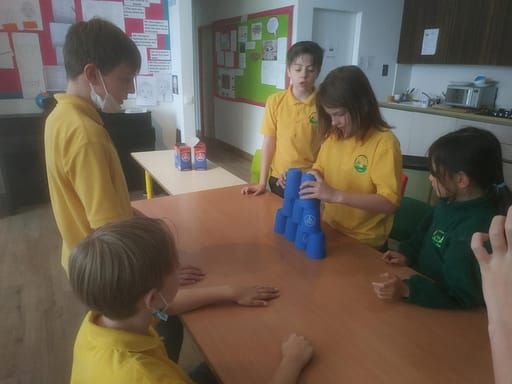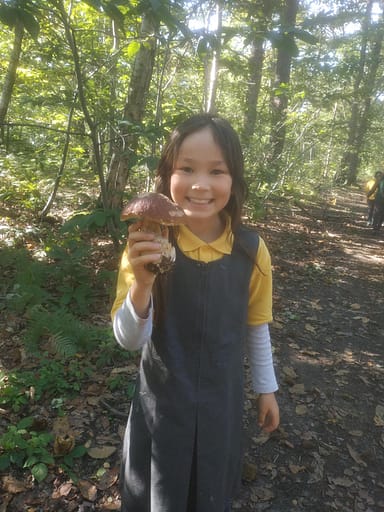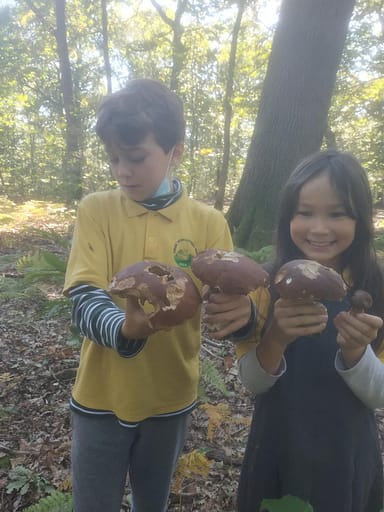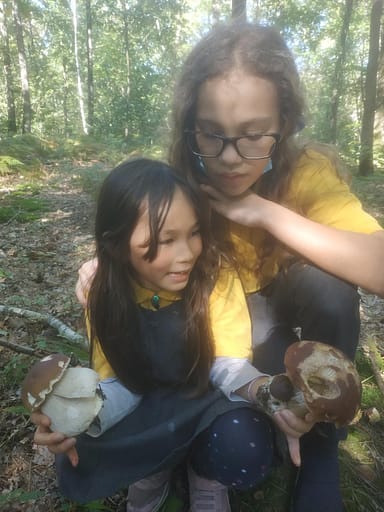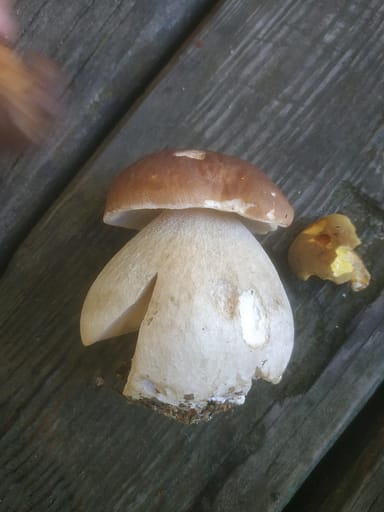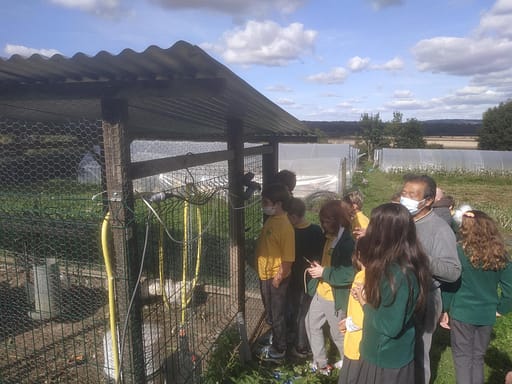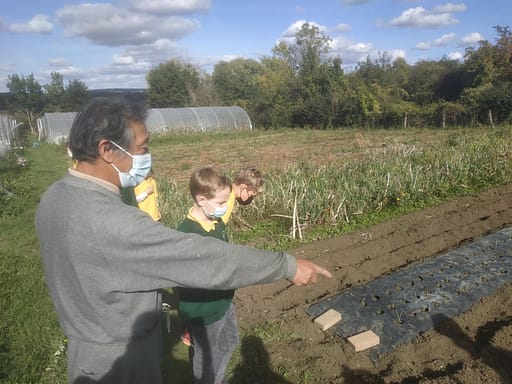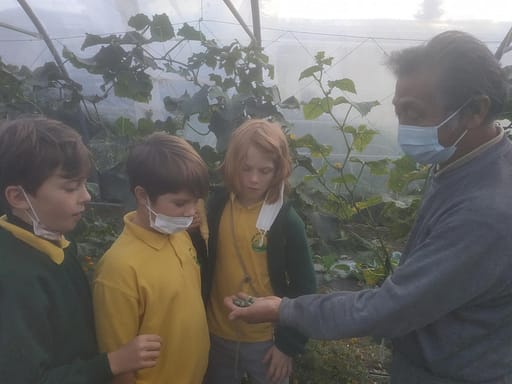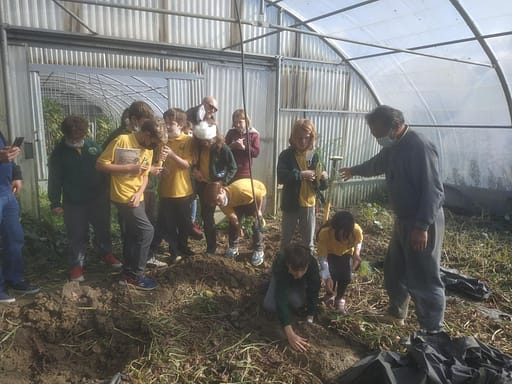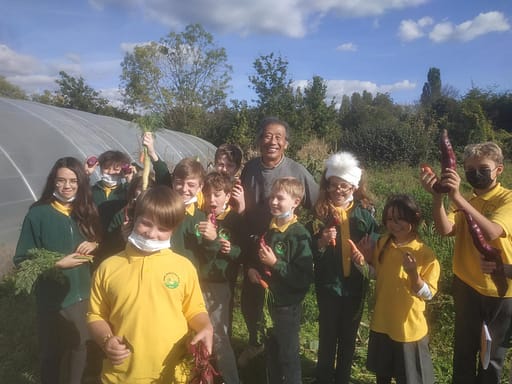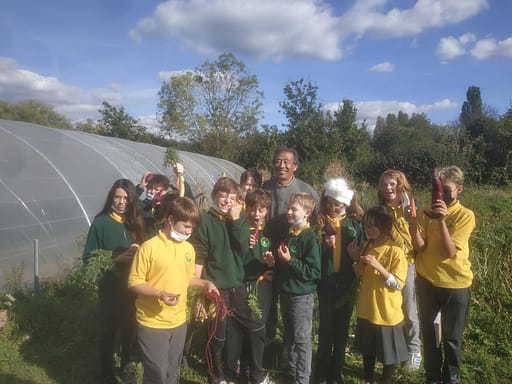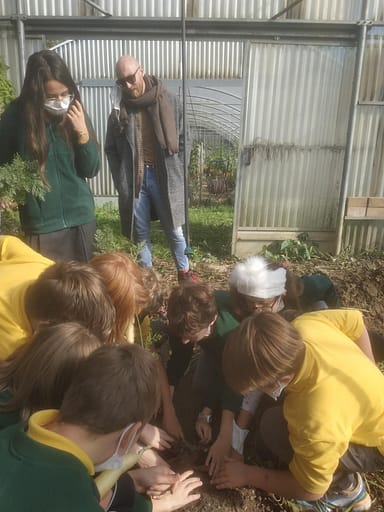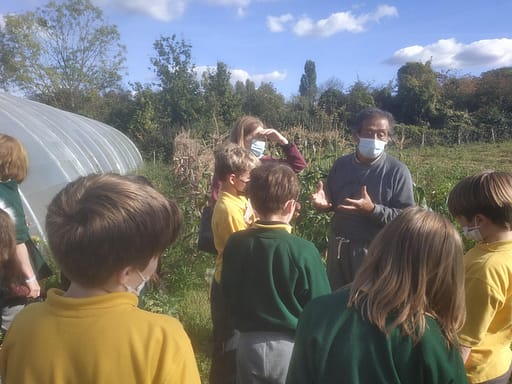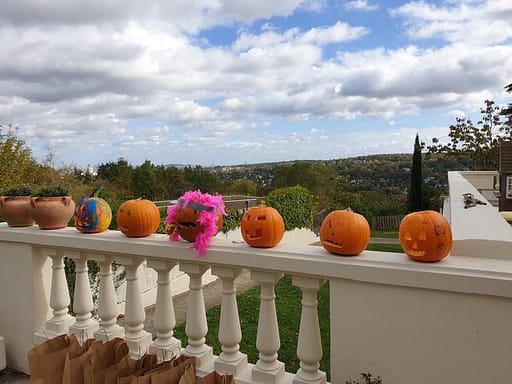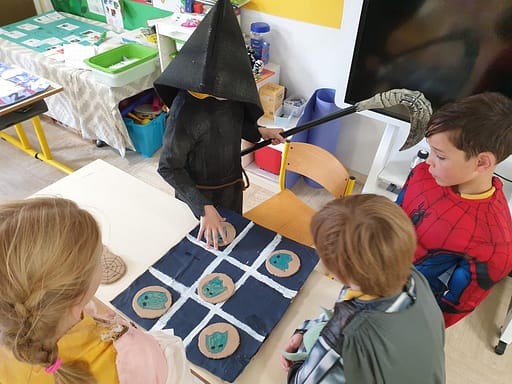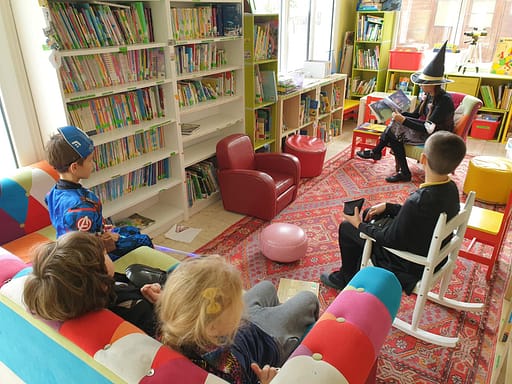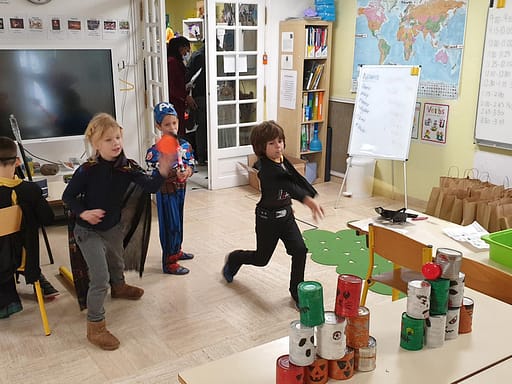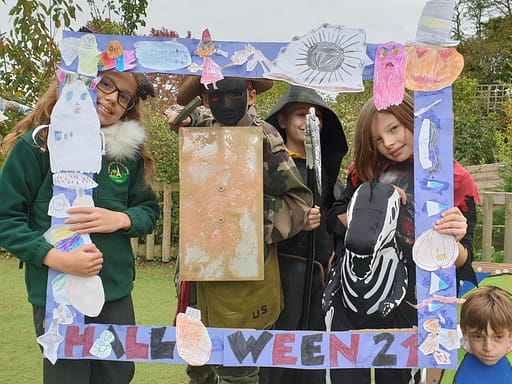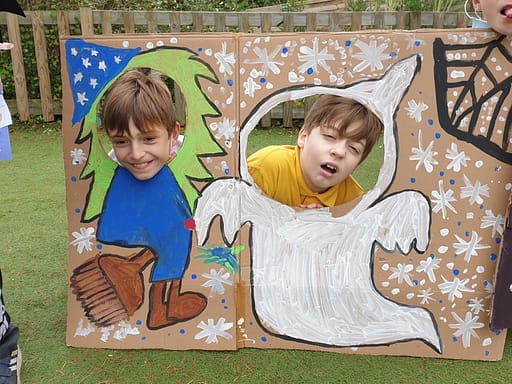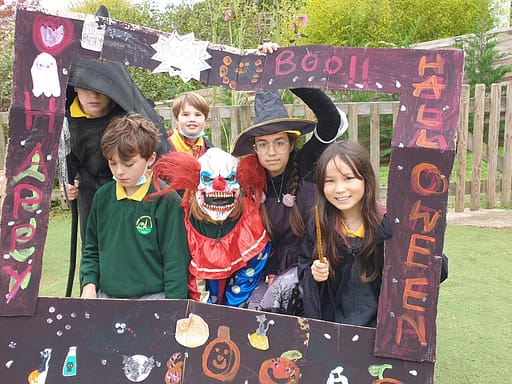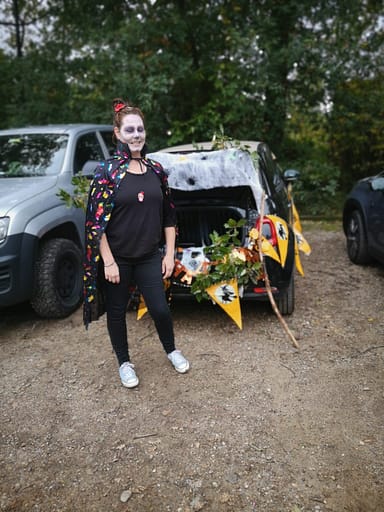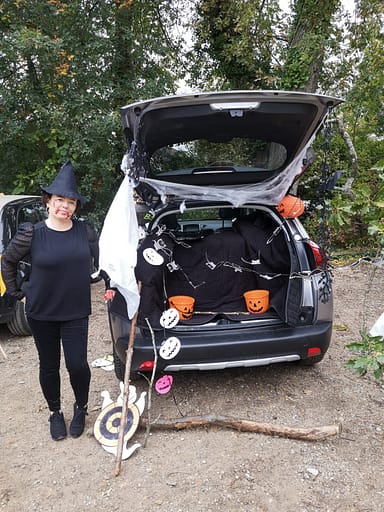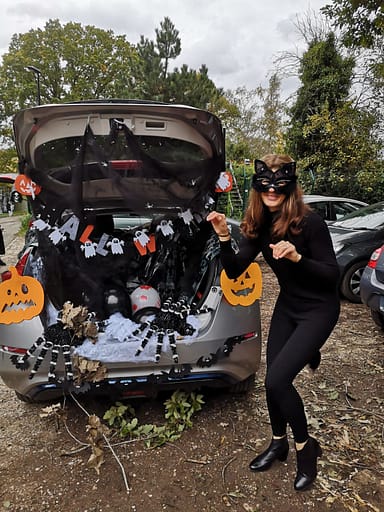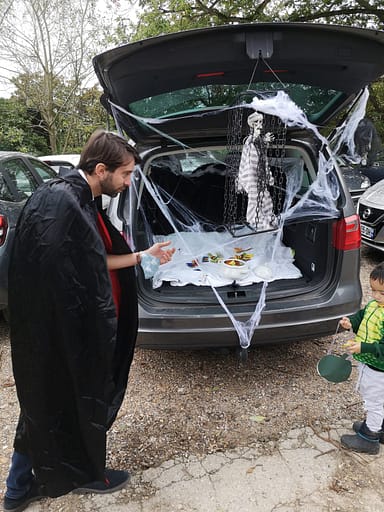English
Oak are reading the children’s classic The Lion, the Witch and the Wardrobe by C.S. Lewis. This magical fantasy can be read at many levels but the children recognise the themes of good and evil, loyalty and betrayal. The book can also be viewed as a Christian Allegory and is an opportunity to examine references to Adam and Eve, the resurrection of Christ and other Christian allusions.
Oak studied biography writing and learned how to select key information and to present it in chronological order. They each wrote a biography of an individual they found inspiring and then produced a biography of Japanese vegetable grower Asafumi Yamashita after a visit to his farm in the village of Chapet.
We read nonsense poems, starting off with the Ning Nang Nong by Spike Milligan and the Jabberwocky by Lewis Carroll.
French
French IPC
History
Oak studied the fascinating Romans, with a particular focus on the army, the largest and toughest military force in the ancient world. They learned about the hierarchy, rigorous training and tough selection process and the discipline and strategies that made this army such a formidable opponent.
The Roman era tied in nicely with our middle school trip to the Louvre. We focused on the Borghese Collection of ancient artefacts. We saw the famous Fighting Warrior, statues of various Caesars, Gods and Goddesses, ornate sarcophagi and thrones. The class learnt that in the 17th century, when ancient statues were much in demand by private collectors, it was the custom to restore them, replacing missing heads and limbs.

Linked to our learning in History, we created our own Roman helmets and shields. We then realised that the Roman sandals fit us perfectly and decided to write our Roman play and act it out in the forest.
Trip to the Louvre
Mathematics
We worked on counting, reading, writing and ordering whole numbers up to 100 000. The children ordered and compared two-digit and three-digit numbers and positioned them on the number line. ‘Crocodile Charlie’, who is really greedy, always eats the largest numbers. He showed the children where to use greater than > and less than < signs. We also counted and converted numbers into Roman numerals and symbols that Ancient Egyptians used in their time. The children practised and refined their written methods for addition, subtraction and multiplication (HTU × U, TU × TU, and HTU x TU). We also solved one-step and two-step multiplication, addition and subtraction problems involving numbers, money and measures.
Geography
Both classes examined the theme of Sustainability in Geography this term, Elm with a particular emphasis on sustainable cities and the problems faced by densely populated and growing urban centres, and Oak on the issues relating to the depletion of natural resources as well as the need to reduce dependency on fossil fuels. In their research they came across the Wonderbag no-fuel slow cooker that has such a positive impact in the developing world. They discovered that this simple product allows families to reduce cooking fuel consumption by up to 70%, reducing carbon emissions and deforestation. Importantly, it reduces the need to cook for long periods of time over open fires, a practice that exposes populations, but mostly women and children, to harmful particles released from burning biomass such as wood and dung. It also frees the same women and girls from hours of unpaid labour.
Inspired by the simple concept, Oak and Elm decided to make their own thermal cooker using a cardboard box, polystyrene and some bubble wrap – and an old blanket to throw on top. They were ready for the Wonder cooker challenge, the Wonderbox versus the Wonderbag (lent by a member of staff). Two pots of rice, two cookers, two excellent results.

Spanish
Oak class had “All About Me” as a theme this term or “Todo sobre mi”. They are able to sing the song “Head, Shoulders, Knees and Toes” in Spanish and they know the words for more parts of the body. Through answering questions, they practised how to present and talk about themselves. They also learned how to use the verb ‘to have’ in the positive and negative forms. We played BINGO to learn the alphabet and vowels. The children talked about the foods they like and don’t like. They applied their knowledge of the physical characteristics of people and related vocabulary. The end-of-term project was on the Day of the Dead Celebration in Latin American countries and the class made flowers and drew skulls and candles for the altar.

Science
Crazy about plants!
Oak class this term have been learning about the local environment with a special focus on plants. We have explored many different varieties of plants and have been able to classify those found in the local environment.

We learnt about the different parts of the plant and the importance of what each part plays in the development and life cycle of a plant. To demonstrate our knowledge and understanding of these features and their role we drew diagrams detailing those parts and then labelled their functions.

Germinator Investigators
We conducted an investigation to measure the best conditions for a seed to begin germination. As a class we discussed the different components that a plant needs to grow and survive.
Sunlight, Water and Soil.
But how are we to measure this?
We discussed what we could do to create a fair test and then as a class formed an hypothesis. Once we had this we begin testing our seeds.

ICT
Oak developed their understanding of different components working together to make a whole. They learnt that computers can be connected together to form systems and that these are built using a number of parts. They know how to explain that a computer system features inputs, processes, and outputs.
The class learned about the internet, what it actually is and how it functions. They developed awareness of IP addresses and the rules (protocols) that computers have for communicating with one another.
They discussed how people can work together when they are not in the same location and applied their knowledge to work on a collaborative online project. They made simple slides featuring text and images.


Forest Challenges and Tabata
Since the beginning of the year, Oak and Elm classes have been engaged in our weekly Forest Challenge and very intense daily 7-minute work-out ”TABATA”. The main purpose of these challenges is to practise team building skills as well as to develop resilience as it is often tough to accomplish the challenge at the first attempt. We learnt that it is important to stay focused until the last moment and clearly recognise that the last push could make a difference to the team. In our next challenges we will be concentrating on fair play and communication which will improve our personal, partner and team-working skills.
Hunting for mushrooms
OAK and ELM visit YAMASHITA’S FARM in the Yvelines.
Asafumi Yamashita – The Haute Couture Vegetable Grower.
Linked to our learning in Science based on ‘Plants and Flowers’, we visited an inspirational gardener who shared some tricks of the trade with us. The children eagerly shared their knowledge of the subject, asked questions and attentively listened to his remarkable story. Self-taught, Asafumi Yamashita grows vegetables with a secret he calls ‘the Yamashita method’. He produces about 50 Japanese varieties a year on 3,000 square metres (a third of this surface being converted into greenhouses). The size of his vegetable garden is only modest compared to the average farm, but for Asafumi Yamashita what matters is not quantity but quality. Some say that he whispers to his vegetables and listens to the voice of his land. The way Mr. Yamashita puts it is that he writes a poem while growing his vegetables and top chefs in Paris write music that goes with his poem. Lucky customers who enjoy those delicious dishes sing the song that was composed for them with love. We were lucky to taste his delicious vegetables and even brought some home to share with our families.

